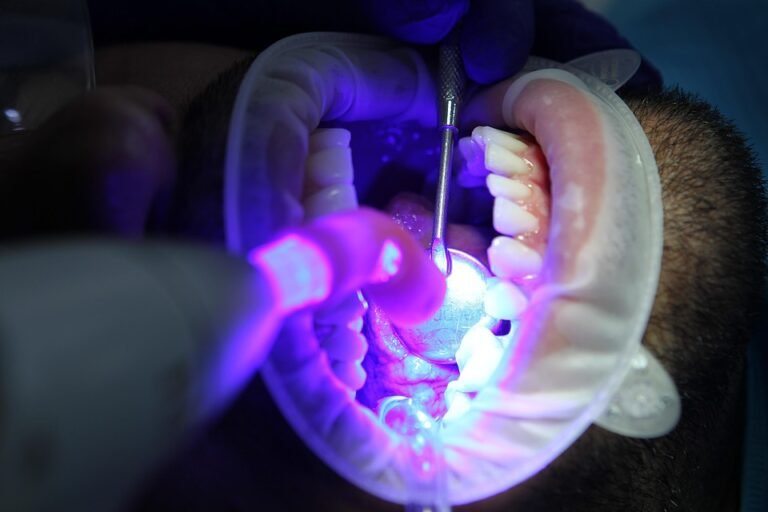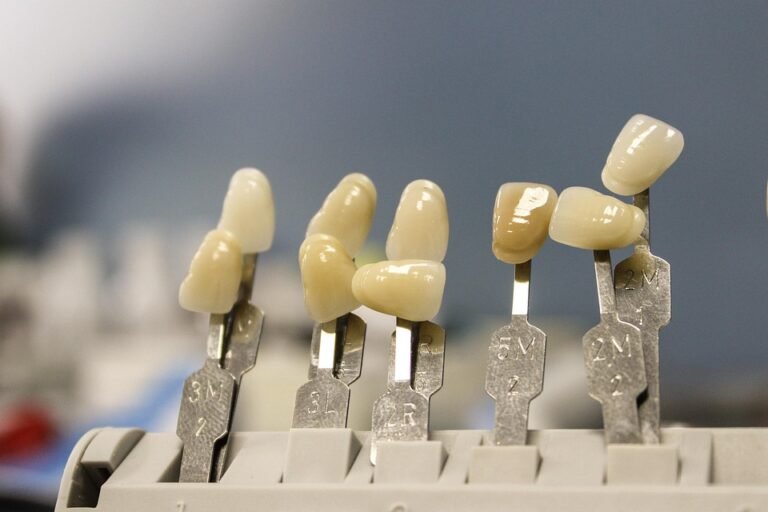What are some common communication mistakes dentists should avoid
Okay, so I’m running a small dental practice and I’m noticing a bit of friction, both with patients and amongst my team. I think a lot of it boils down to communication. I’m not talking about complex surgical explanations, but more the everyday interactions.
Specifically, I’m wondering about things like:
-
How to explain treatment plans so patients ACTUALLY understand them, not just nod along politely and then complain about the cost later? We’re talking crowns, root canals, fillings… all that jazz. How do I ensure they feel informed and empowered to make a decision?
-
How to deal with patients who are clearly anxious or upset? What are some phrases or techniques to de-escalate the situation and build trust? I had a patient almost walk out yesterday because she felt I wasn’t listening to her pain levels.
-
What common mistakes do dentists make when communicating with their team (hygienists, assistants, receptionists)? I’ve noticed some crossed wires and a general lack of cohesion sometimes. I think my instructions might not be as clear as I believe them to be.
-
Are there specific words or phrases that dentists should generally avoid saying? Like things that might come across as condescending or dismissive, even if that’s not our intention?
- What about nonverbal communication? Are there things we might be doing unconsciously that are harming our relationships with patients and staff?
I want to create a more positive and efficient environment in my practice. I think better communication is key, but I’m not sure where to start. Any practical advice or examples would be greatly appreciated!
Answer
Dentists, like professionals in any field heavily reliant on patient interaction, need to be effective communicators to build trust, ensure patient compliance, and ultimately provide the best possible care. Several common communication mistakes can hinder these goals. Here’s a detailed breakdown of mistakes dentists should avoid:
1. Using Jargon and Technical Language:
- Problem: Overusing dental terminology (e.g., "distal caries," "buccal surface," "apical lesion") without explaining it leaves patients confused, intimidated, and feeling excluded from the conversation about their own health. Patients may be hesitant to ask for clarification, assuming they should already understand or fearing they’ll appear unintelligent.
- Impact: Misunderstanding leads to anxiety, distrust, and a decreased likelihood of patients adhering to treatment plans or returning for future care. It can also create a power dynamic where the dentist seems superior and unapproachable.
- Solution: Translate dental terms into simple, everyday language. For example, instead of "distal caries," say "a cavity on the back side of the tooth." Use analogies and visual aids (models, diagrams, intraoral photos) to illustrate concepts. Always ask, "Does that make sense?" and encourage questions.
2. Rushing the Consultation and Examination:
- Problem: When dentists appear hurried or distracted, patients feel like their concerns are not being heard or valued. A rushed exam can lead to incomplete assessments, overlooking important details in patient history, or not allowing sufficient time for questions.
- Impact: Patients may feel dismissed and less likely to fully disclose information about their oral health habits or concerns. This can negatively impact the accuracy of the diagnosis and the effectiveness of treatment. A sense of unease can also cause patients to seek other dentists in future visits.
- Solution: Schedule adequate time for each appointment, factoring in complexity and patient needs. Focus solely on the patient during the appointment, minimizing interruptions. Make eye contact, actively listen, and demonstrate empathy. Provide a brief summary of the findings and treatment plan at the end of the consultation.
3. Failing to Listen Actively:
- Problem: While dentists need to explain treatment options and provide instructions, they also need to be attentive listeners. Interrupting patients, dismissing their concerns, or failing to acknowledge their fears creates a communication barrier. Active listening means paying full attention, both verbally and nonverbally, to what the patient is saying.
- Impact: Patients may feel that their opinions and concerns are not being considered, leading to resentment and a lack of cooperation. Critical information about their medical history, allergies, pain levels, or treatment preferences might be missed.
- Solution: Use open-ended questions ("Tell me more about…," "How are you feeling about…?"). Paraphrase what the patient says to ensure understanding ("So, if I understand correctly, you’re concerned about…"). Use nonverbal cues like nodding and maintaining eye contact to show engagement. Acknowledge and validate their feelings ("I understand that you’re anxious about this procedure").
4. Neglecting Nonverbal Communication:
- Problem: Nonverbal cues like body language, facial expressions, and tone of voice can significantly impact communication. A dentist with poor posture, a tense demeanor, or a condescending tone can create a negative impression, even if their words are reassuring.
- Impact: Nonverbal cues can contradict verbal communication, creating confusion and distrust. Patients may perceive the dentist as aloof, uncaring, or untrustworthy.
- Solution: Be mindful of body language. Maintain good posture, make eye contact, and smile genuinely. Use a calm and reassuring tone of voice. Pay attention to the patient’s nonverbal cues and adjust your approach accordingly. Be aware of personal space and cultural sensitivities.
5. Not Providing Adequate Explanations of Treatment Options:
- Problem: Presenting only one treatment option or failing to thoroughly explain the risks, benefits, and alternatives of each option deprives patients of their autonomy and informed consent.
- Impact: Patients may feel pressured into a treatment they don’t fully understand or that doesn’t align with their goals or budget. This can lead to dissatisfaction, noncompliance, and potential legal issues.
- Solution: Discuss all viable treatment options, including the option of doing nothing (with a clear explanation of the potential consequences). Explain the pros and cons of each option in clear, non-technical language. Use visual aids to illustrate the procedures and expected outcomes. Provide written information and encourage patients to ask questions. Let patients guide the direction of treatment in tandem with professional opinion.
6. Failing to Address Patient Anxiety and Fears:
- Problem: Many patients experience anxiety or fear related to dental visits. Ignoring or dismissing these feelings can exacerbate the problem and create a negative experience.
- Impact: Anxious patients may be less cooperative during treatment, experience increased pain sensitivity, and avoid future dental care.
- Solution: Acknowledge and validate patient fears. Ask about their previous dental experiences and any specific concerns they have. Use relaxation techniques (deep breathing exercises, guided imagery). Explain the procedure in detail, emphasizing pain management strategies. Offer distractions (music, television). Consider pharmacological options like nitrous oxide or oral sedatives for highly anxious patients.
7. Avoiding Difficult Conversations:
- Problem: Dentists may avoid discussing sensitive topics like the cost of treatment, poor oral hygiene, or the need for extensive restorative work.
- Impact: Avoiding these conversations can lead to misunderstandings, financial disputes, and a breakdown in the patient-dentist relationship. Patients may feel blindsided by unexpected costs or feel judged for their oral hygiene habits.
- Solution: Address difficult topics proactively and empathetically. Be transparent about fees and payment options. Deliver constructive criticism with sensitivity and focus on solutions. Use "I" statements to avoid blaming or accusing ("I’m concerned about…"). Offer support and resources to help patients improve their oral hygiene.
8. Inconsistent Communication Among Staff:
- Problem: When different members of the dental team provide conflicting information or inconsistent instructions, it can confuse patients and undermine trust in the practice.
- Impact: Patients may feel uncertain about the accuracy of the information they receive and may question the competence of the dental team.
- Solution: Ensure that all staff members are well-trained in communication skills and have a clear understanding of the practice’s protocols. Promote open communication among staff members to ensure consistent messaging. Establish clear channels for patient communication (e.g., designated staff member for answering questions).
9. Poor Communication Regarding Post-Operative Care:
- Problem: Vague or incomplete instructions about post-operative care can lead to complications, pain, and delayed healing.
- Impact: Patients may experience unnecessary discomfort or complications, leading to dissatisfaction and potential legal issues.
- Solution: Provide detailed, written post-operative instructions that are easy to understand. Explain the expected recovery process, potential complications, and warning signs. Provide contact information for after-hours support. Follow up with patients to check on their progress and address any concerns.
10. Not Seeking Feedback and Continuous Improvement:
- Problem: Assuming that communication is effective without actively seeking feedback from patients can lead to complacency and missed opportunities for improvement.
- Impact: The practice may continue to make the same communication mistakes, leading to ongoing patient dissatisfaction and a negative reputation.
- Solution: Implement a system for collecting patient feedback (e.g., surveys, online reviews). Regularly review feedback and identify areas for improvement. Provide ongoing training for staff members to enhance their communication skills.
By recognizing and addressing these common communication mistakes, dentists can build stronger relationships with their patients, improve treatment outcomes, and create a more positive and successful dental practice.



